Let's perform a repeated-measures ANOVA: Researchers want to test a new anti-anxiety medication. They measure the anxiety of 7 participants three times: once before taking the medication, once one week after taking the medication, and once two weeks after taking the medication. Anxiety is rated on a scale of 1-10, with 10 being "high anxiety" and 1 being "low anxiety". Are there any differences between the three conditions using alpha = 0.05?
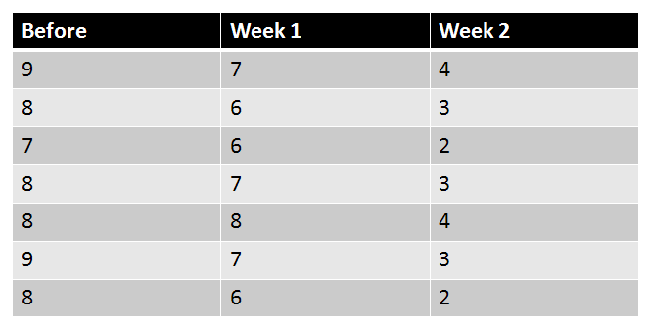
|
Figure 1. |
|---|
| Steps for Repeated-Measures ANOVA |
|---|
|
1. Define Null and Alternative Hypotheses 2. State Alpha 3. Calculate Degrees of Freedom 4. State Decision Rule 5. Calculate Test Statistic 6. State Results 7. State Conclusion |
Let's begin.
1. Define Null and Alternative Hypotheses
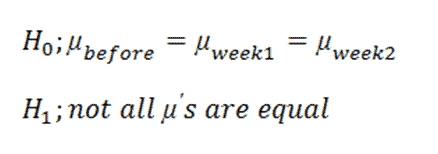
|
Figure 2. |
|---|
2. State Alpha
Alpha = 0.05
3. Calculate Degrees of Freedom
Now we calculate the degrees of freedom using N = 21, s = 7, and a = 3. You should already recognize N. "a" refers to the number of groups ("levels") you're dealing with, and "s" refers to the number of subjects you have in each condition:
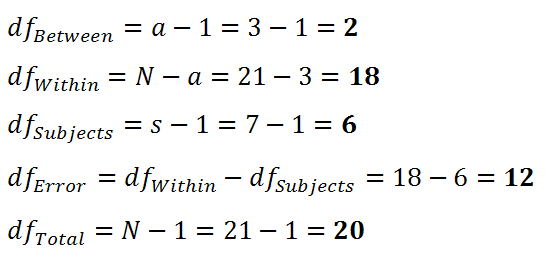
|
Figure 3. |
|---|
4. State Decision Rule
To look up the critical value, we need to use two different degrees of freedom.

|
Figure 4. |
|---|
We now head to the F-table and look up the critical value using (2, 12) and alpha = 0.05. This results in a critical value of 3.8853, so our decision rule is:
If F is greater than 3.8853, reject the null hypothesis.
5. Calculate Test Statistic
To calculate the test statistic, we first need to find three of five values:

|
Figure 5. |
|---|
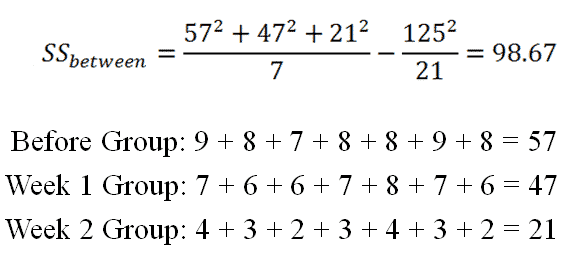
|
Figure 6. |
|---|
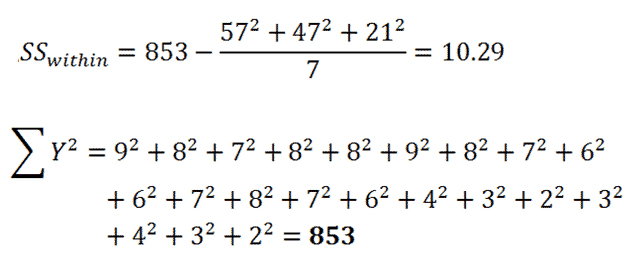
|
Figure 7. |
|---|
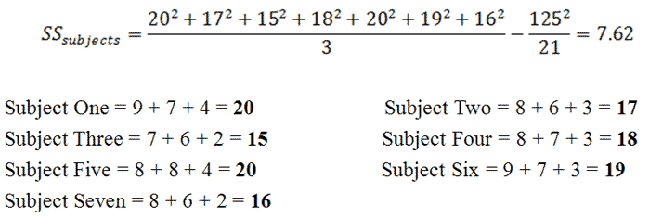
|
Figure 8. |
|---|
All the values we've found so far can be organized in an ANOVA table:
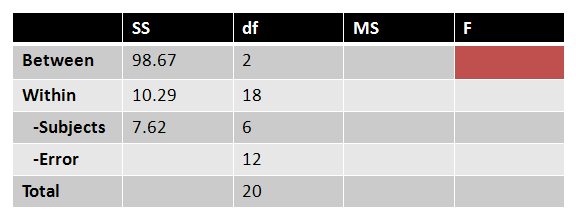
|
Figure 9. |
|---|
We can use the three values we've already found to fill in the two unknown values:
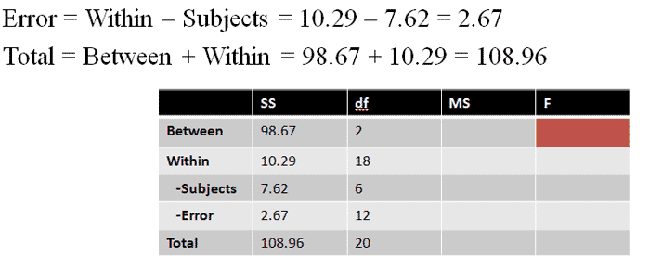
|
Figure 10. |
|---|
Now we find each MS by diving each SS by their respective df:

|
Figure 11. |
|---|
And finally, we can calculate our F:

|
Figure 12. |
|---|
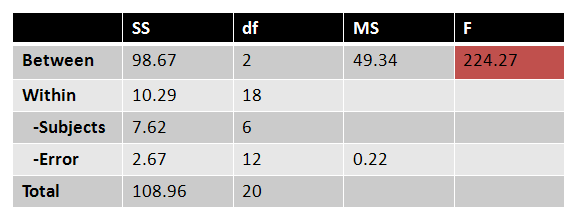
|
Figure 13. |
|---|
6. State Results
F = 224.27
Result: Reject the null hypothesis.
7. State Conclusion
The three conditions differed significantly on anxiety level, F(2, 12) = 224.27, p < 0.05.